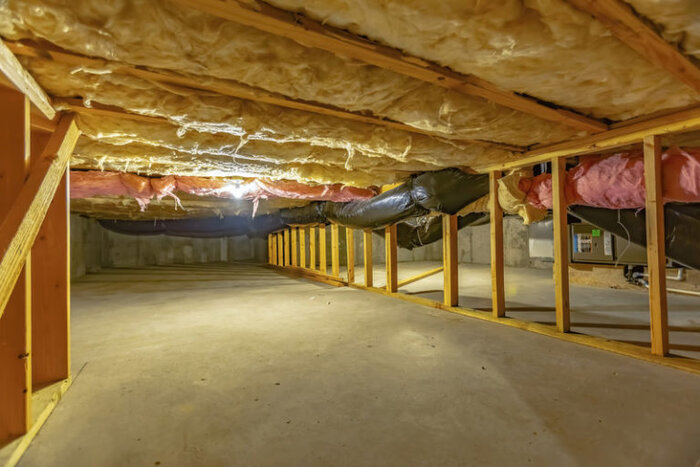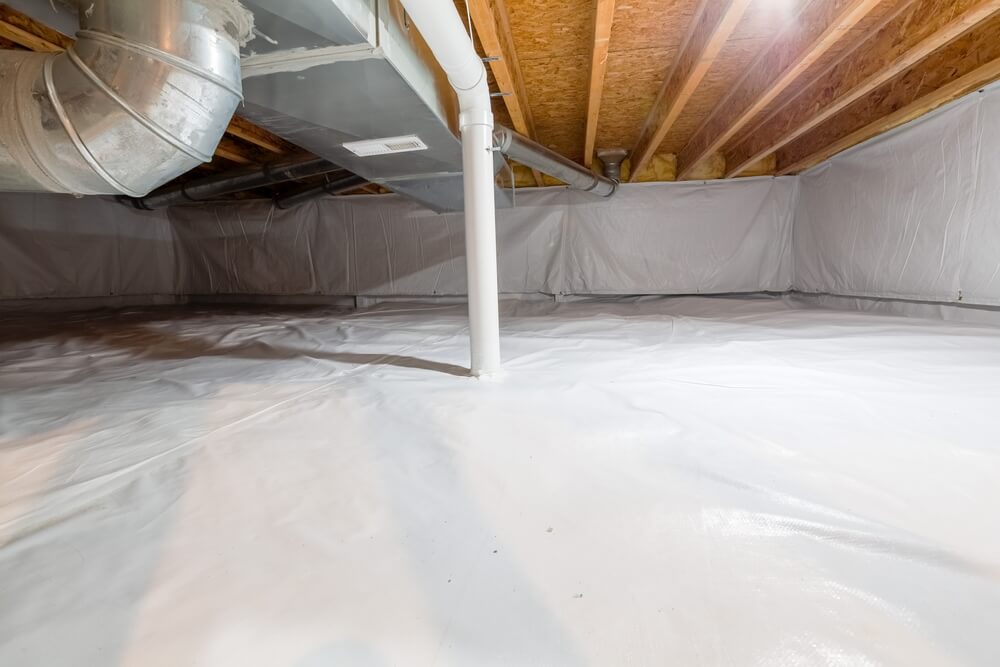Ensuring that your crawl space is properly insulated is essential for maintaining a healthy home environment. Crawl space insulation helps improve energy efficiency, regulate temperature, and prevent moisture buildup, all of which contribute to better indoor air quality. In this guide, we’ll cover the best strategies for insulating your crawl space, with a focus on optimizing your home's health and energy efficiency.
Types of Crawl Space Insulation
The first step in choosing the best crawl space insulation strategy is understanding the types of insulation available. Each option has distinct benefits and considerations.
Fiberglass Batt Insulation
Fiberglass batt insulation is a popular choice for many homeowners due to its affordability and ease of installation. It is typically installed between the floor joists of the crawl space.
Pros:
- Affordable
- Easy to install
- Good thermal performance
Cons:
- Susceptible to moisture damage if not properly sealed
- Can be prone to settling over time
Foam Board Insulation

Foam board insulation, such as expanded polystyrene (EPS) or extruded polystyrene (XPS), is another option often used in crawl spaces. It offers high thermal resistance and is more durable than fiberglass.
Pros:
- Moisture-resistant
- Rigid and durable
- Better thermal performance than fiberglass
Cons:
- More expensive than fiberglass
- Requires proper sealing to avoid gaps
Spray Foam Insulation
Spray foam insulation is a high-performance option that expands to fill gaps and cracks in crawl spaces. It provides an air-tight seal and offers superior insulation.
Pros:
- Excellent air sealing
- High R-value per inch
- Moisture-resistant
Cons:
- Expensive
- Requires professional installation
Reflective or Radiant Barrier Insulation
Radiant barriers reflect heat away, helping to keep your crawl space cool in summer and warm in winter. This option works best in areas with extreme seasonal temperature fluctuations.
Pros:
- Reduces heat transfer
- Easy to install
Cons:
- Limited thermal resistance compared to foam or fiberglass
- Not suitable for cold climates
Insulation Type | R-Value | Moisture Resistance | Ease of Installation | Cost |
Fiberglass Batt | R-3 to R-4 | Low | Easy | Low |
Foam Board | R-5 to R-6 | High | Moderate | Moderate |
Spray Foam | R-6 to R-7 | Very High | Difficult (requires professional) | High |
Radiant Barrier | R-1 to R-3 | Moderate | Easy | Moderate |
Selection Factors for Crawl Space Insulation

When selecting the best crawl space insulation for your home, consider several factors, including climate, budget, and long-term goals.
Climate
Your local climate plays a significant role in determining the most effective insulation type. For colder climates, spray foam or foam board insulation may be the best option due to their superior thermal performance. For warmer climates, fiberglass batt or radiant barriers may be sufficient.
Budget
Fiberglass batt insulation is generally the most budget-friendly, while spray foam is the most expensive. If you are working with a limited budget, fiberglass batt may be the best starting point. However, investing in spray foam could offer long-term energy savings due to its superior performance.
Moisture Control
If your crawl space is prone to moisture problems, consider options that offer high moisture resistance, such as foam board or spray foam insulation. These materials help prevent mold growth and wood rot, which can lead to significant structural damage over time.
Longevity
When considering long-term goals, think about durability. Spray foam and foam board insulation generally last longer than fiberglass batt, which may settle or degrade over time. Opting for more durable materials may offer better value in the long run.
Environmental Impact
If sustainability is a priority for your home, look for insulation materials with environmentally friendly certifications. For example, certain spray foam products use water-blown methods, which have a lower environmental impact than traditional foam blowing agents.
Installation Process
Proper installation is crucial for maximizing the effectiveness of crawl space insulation. Each type of insulation requires specific techniques.
Fiberglass Batt Installation
- Measure the space between floor joists.
- Cut the fiberglass batt to fit.
- Place the batt between the joists, ensuring a snug fit without gaps.
- Secure the batt using insulation supports or adhesive.
Foam Board Installation
- Cut foam board to fit between floor joists or along the crawl space walls.
- Apply adhesive to the back of the board.
- Press the foam board into place, ensuring that the edges are tightly sealed.
- Use caulking or foam sealant to fill any gaps or seams.
Spray Foam Installation
- Ensure the crawl space is clean and dry before installation.
- Mix the spray foam according to manufacturer instructions.
- Apply foam to the underside of the floor and along the walls in a uniform layer.
- Allow the foam to cure, which can take several hours.
Radiant Barrier Installation
- Clean the crawl space surfaces.
- Hang the radiant barrier along the crawl space walls or underside of the floor.
- Secure the barrier with staples or adhesive.

Things to Consider Before Making a Decision
Before making a final decision on the insulation type, there are several factors to weigh.
- Moisture Levels: If your crawl space has high humidity or moisture issues, opt for moisture-resistant options like spray foam or foam board insulation.
- Air Sealing: If reducing air leaks is a top priority, spray foam is the most effective option, as it expands to fill cracks and gaps.
- Future Home Improvements: Consider whether you plan to make other energy-efficiency improvements, such as upgrading your HVAC system or sealing ducts, as some insulation types may complement these improvements better than others.
Common Questions
What is the best insulation for crawl spaces?
The best insulation for crawl spaces depends on your specific needs, but spray foam offers the highest performance, especially for moisture control and energy efficiency.
How do I prevent moisture buildup in my crawl space?
To prevent moisture buildup, ensure proper vapor barriers are in place, seal all gaps, and choose a moisture-resistant insulation material like foam board or spray foam.
Can I install crawl space insulation myself?
While fiberglass batt and radiant barriers are DIY-friendly, spray foam and foam board insulation are more complex and may require professional installation.
How much does it cost to insulate a crawl space?
Costs vary depending on the insulation type, size of the crawl space, and labor costs. Fiberglass batt insulation is the most affordable, while spray foam is the most expensive.
How long does crawl space insulation last?
Spray foam and foam board insulation typically last longer than fiberglass batt insulation, which may degrade or settle over time. Expect high-performance options to last 20+ years with proper maintenance.
Make the Right Decision
Choosing the right insulation for your crawl space is a critical decision that impacts your home's energy efficiency, comfort, and overall health. Consider your climate, moisture levels, and long-term goals when selecting the best insulation type for your home. Whether you opt for fiberglass batt, foam board, spray foam, or a radiant barrier, each has distinct benefits that can contribute to a healthier, more energy-efficient living space.



